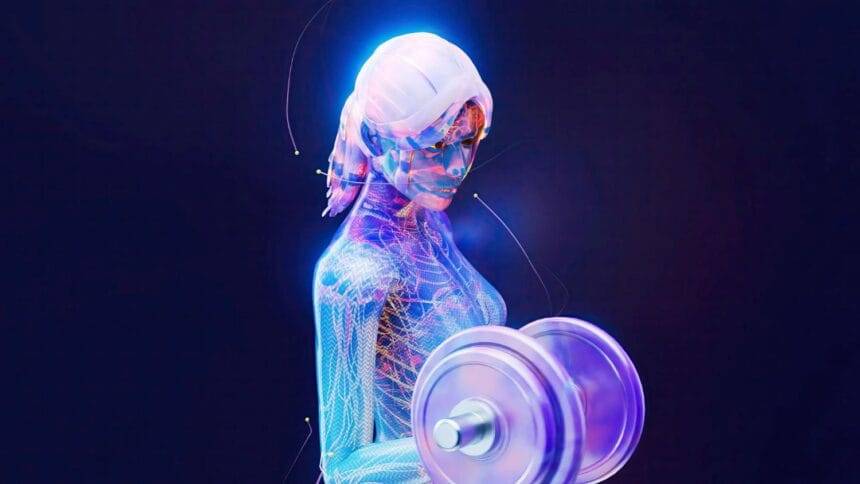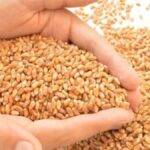Main Points In Hindi (मुख्य बातें – हिंदी में)
-
व्यायाम के प्रभाव: एमआईटी इंजीनियरों ने इस अध्ययन में पाया कि व्यायाम से मांसपेशियों और न्यूरॉन्स में विकास को बढ़ावा मिलता है, जो मायोकिन्स नामक जैव रासायनिक संकेतों की रिहाई द्वारा होता है। ये संकेत न्यूरॉन्स की वृद्धि को चार गुना तक बढ़ा देते हैं।
-
भौतिक और जैव रासायनिक प्रभाव: शोध में बताया गया है कि व्यायाम का शारीरिक प्रभाव, जैसे मांसपेशियों का खिंचाव और संकुचन, भी न्यूरॉन्स के विकास को प्रोत्साहित करता है। यह दोनों प्रकार के प्रभाव (जैव रासायनिक और यांत्रिक) मिलकर तंत्रिका विकास में महत्वपूर्ण भूमिका निभाते हैं।
-
संभावित चिकित्सा उपयोग: इस शोध के निष्कर्ष विशेष रूप से तंत्रिका चोटों या न्यूरोडीजेनेरेटिव रोगों, जैसे कि एएलएस, के इलाज में प्रासंगिक हो सकते हैं। मांसपेशियों को उत्तेजित करने से तंत्रिकाओं की मरम्मत और गतिशीलता बहाल करने की संभावना है।
-
भविष्य के अनुसंधान: शोधकर्ताओं का लक्ष्य यह जानना है कि कैसे लक्षित मांसपेशी उत्तेजना का उपयोग नर्व क्षति की मरम्मत और बिना गतिशीलता खोए व्यक्तियों में सुधार करने के लिए किया जा सकता है।
- अनुसंधान विधियाँ: अध्ययन में, शोधकर्ताओं ने आनुवंशिक रूप से मांसपेशियों को संशोधित किया और प्रकाश के माध्यम से व्यायाम का अनुकरण किया। वे यह भी जांच कर रहे हैं कि यह दृष्टिकोण मांसपेशियों और तंत्रिकाओं के बीच संचार को कैसे प्रभावित कर सकता है।
Main Points In English(मुख्य बातें – अंग्रेज़ी में)
Here are the main points of the article:
-
Exercise Boosts Neuronal Growth: MIT engineers discovered that exercise releases biochemical signals called myokines from contracting muscles, which significantly enhance neuronal growth, with neurons exposed to myokines growing four times faster than those that are not.
-
Mechanical and Biochemical Signaling: The study indicates that not only biochemical signals but also the physical effects of exercise (like stretching and contracting) promote nerve growth, highlighting a critical link between muscles and neurons.
-
Therapeutic Implications: The findings suggest potential therapeutic applications for treating nerve injuries and neurodegenerative diseases (like ALS), as stimulating muscles may aid in nerve recovery and restore mobility in affected individuals.
-
Future Research Directions: The research team plans to investigate targeted muscle stimulation techniques to repair damaged nerves and improve motor function, expanding on their previous studies where muscle tissues were stimulated to restore mobility in mice with muscle injuries.
- Experimental Setup and Results: The researchers developed a method to simulate exercise in vitro, using genetically modified muscle tissues that responded to light. They found that both myokine exposure and mechanical stimulation through muscle contractions led to significant neuronal growth, underscoring the importance of both biochemical and mechanical pathways in neuronal development.


Complete News In Hindi(पूरी खबर – हिंदी में)
एमआईटी इंजीनियरों ने पता लगाया है कि व्यायाम से मांसपेशियों और व्यक्तिगत न्यूरॉन्स को लाभ होता है। कब व्यायाम के दौरान मांसपेशियाँ सिकुड़ती हैंवे मायोकिन्स नामक जैव रासायनिक संकेत छोड़ते हैं, जो इन संकेतों के संपर्क में नहीं आने वाले न्यूरॉन्स की तुलना में न्यूरॉन्स को चार गुना आगे बढ़ने के लिए उत्तेजित करते हैं।
इसके अतिरिक्त, न्यूरॉन्स व्यायाम के शारीरिक प्रभाव पर प्रतिक्रिया करते हैं – विशेष रूप से, मांसपेशियों की गतिविधियों के समान खींचा और खींचा जाना – विकास को जैव रासायनिक संकेतों के समान ही प्रभावी ढंग से बढ़ावा देता है। यह शोध बताता है कि व्यायाम का तंत्रिका विकास पर महत्वपूर्ण जैव रासायनिक और शारीरिक प्रभाव पड़ता है।
यह अध्ययन यह दिखाने वाला पहला अध्ययन है कि व्यायाम से जैव रासायनिक संकेत और शारीरिक प्रभाव दोनों तंत्रिका विकास को बढ़ावा दे सकते हैं, जिससे मांसपेशियों और तंत्रिकाओं के बीच एक महत्वपूर्ण संबंध का पता चलता है। निष्कर्षों में संभावित चिकित्सीय निहितार्थ हैं, विशेष रूप से तंत्रिका चोटों या न्यूरोडीजेनेरेटिव रोगों के इलाज के लिए।
यूजीन बेल कैरियर डेवलपमेंट में मैकेनिकल इंजीनियरिंग के सहायक प्रोफेसर एमआईटीरितु रमन ने कहा, “अब जब हम जानते हैं कि यह मांसपेशी-तंत्रिका क्रॉसस्टॉक मौजूद है, तो यह तंत्रिका चोट जैसी चीजों के इलाज के लिए उपयोगी हो सकता है, जहां तंत्रिका और मांसपेशियों के बीच संचार कट जाता है। यदि हम मांसपेशियों को उत्तेजित करते हैं, तो हम तंत्रिका को ठीक होने और उन लोगों को गतिशीलता बहाल करने के लिए प्रोत्साहित कर सकते हैं जिन्होंने दर्दनाक चोट या न्यूरोडीजेनेरेटिव बीमारियों के कारण इसे खो दिया है।
यह प्रदर्शित करने के बाद कि मांसपेशियों का व्यायाम सेलुलर स्तर पर तंत्रिका विकास को बढ़ावा दे सकता है, टीम यह जांच करने की योजना बना रही है कि क्षतिग्रस्त नसों को ठीक करने के लिए लक्षित मांसपेशी उत्तेजना का उपयोग कैसे किया जा सकता है।
उनका लक्ष्य यह पता लगाना है कि यह दृष्टिकोण एएलएस जैसी न्यूरोडीजेनेरेटिव बीमारियों से पीड़ित लोगों में गतिशीलता कैसे बहाल कर सकता है, जो तंत्रिका-मांसपेशियों के संचार को बाधित करता है। यह शोध नए उपचारों के लिए मार्ग प्रशस्त कर सकता है तंत्रिका क्षति की मरम्मत करें और मोटर फ़ंक्शन में सुधार करें।
2023 में, रितु रमन और उनकी टीम ने दिखाया कि वे मांसपेशियों के ऊतकों को प्रकाश के साथ प्रत्यारोपित और उत्तेजित करके दर्दनाक मांसपेशियों की चोटों वाले चूहों में गतिशीलता बहाल कर सकते हैं। समय के साथ, ग्राफ्टेड मांसपेशियों ने चूहों को मोटर फ़ंक्शन फिर से हासिल करने में मदद की, जो स्वस्थ चूहों के समान स्तर तक पहुंच गया।
उन्होंने पाया कि व्यायाम ने ग्राफ्टेड मांसपेशियों को जैव रासायनिक संकेतों का उत्पादन करने के लिए उत्तेजित किया जो तंत्रिका और रक्त वाहिका के विकास को बढ़ावा देते हैं।
प्रारंभ में, रमन और उनकी टीम को आश्चर्य हुआ कि क्या प्रतिरक्षा प्रणाली जैसे अन्य कारक, तंत्रिका विकास पर मांसपेशियों के प्रभाव को प्रभावित कर रहे थे। इसका परीक्षण करने के लिए उन्होंने अपने नए अध्ययन को केवल मांसपेशियों और तंत्रिका ऊतकों पर केंद्रित किया। उन्होंने तंत्रिका विकास पर व्यायाम के प्रत्यक्ष प्रभाव की जांच करने के लिए चूहे की मांसपेशियों की कोशिकाओं को लंबे तंतुओं में विकसित किया, जो परिपक्व मांसपेशी ऊतक की एक शीट में जुड़ गए।
टीम ने आनुवंशिक रूप से मांसपेशियों के ऊतकों को प्रकाश की प्रतिक्रिया में सिकुड़ने के लिए संशोधित किया, जिससे उन्हें मांसपेशियों को उत्तेजित करने के लिए प्रकाश चमकाकर बार-बार व्यायाम की नकल करने की अनुमति मिली। रमन ने पहले इस प्रक्रिया के दौरान मांसपेशियों के ऊतकों को सहारा देने के लिए एक विशेष जेल मैट विकसित किया था, जो व्यायाम के दौरान मांसपेशियों के ऊतकों को फटने से बचाता था।
मांसपेशियों को उत्तेजित करने के बाद, शोधकर्ताओं ने आस-पास के समाधान के नमूने एकत्र किए, यह उम्मीद करते हुए कि इसमें मायोकिन्स – विकास कारक, आरएनए और प्रोटीन जैसे जैव रासायनिक संकेत शामिल होंगे जो तंत्रिका विकास को बढ़ावा दे सकते हैं।
टीम ने व्यायाम किए गए मांसपेशी ऊतक से मायोकाइन समाधान को माउस स्टेम कोशिकाओं से विकसित मोटर न्यूरॉन्स वाले एक अलग डिश में स्थानांतरित कर दिया। मायोकाइन मिश्रण के संपर्क में आने के बाद, न्यूरॉन्स उन लोगों की तुलना में चार गुना तेजी से और दूर बढ़े, जिन्हें समाधान नहीं मिला था। रमन ने कहा कि विकास तीव्र और महत्वपूर्ण दोनों था।
आगे की जांच करने के लिए, शोधकर्ताओं ने एक आनुवंशिक विश्लेषण किया, जिसमें न्यूरॉन्स से आरएनए निकालकर यह जांच की गई कि क्या मायोकिन्स ने विशिष्ट न्यूरोनल जीन की अभिव्यक्ति में परिवर्तन को ट्रिगर किया है, जिससे इस बढ़ी हुई वृद्धि को चलाने वाले जैव रासायनिक प्रभावों पर प्रकाश डाला गया है।
रमन कहते हैं, “हमने देखा कि व्यायाम-उत्तेजित न्यूरॉन्स में अप-विनियमित कई जीन न केवल न्यूरॉन विकास से संबंधित थे, बल्कि न्यूरॉन परिपक्वता से भी संबंधित थे, वे मांसपेशियों और अन्य तंत्रिकाओं से कितनी अच्छी तरह बात करते हैं, और अक्षतंतु कितने परिपक्व हैं। ऐसा प्रतीत होता है कि व्यायाम न्यूरॉन वृद्धि और वे कितने परिपक्व और अच्छी तरह से कार्य कर रहे हैं, पर प्रभाव डालता है।
शोधकर्ताओं ने तब सोचा कि क्या व्यायाम के शारीरिक प्रभाव – केवल जैव रासायनिक संकेतों के बजाय – भी न्यूरॉन विकास को बढ़ावा दे सकते हैं। चूंकि न्यूरॉन्स शारीरिक रूप से मांसपेशियों से जुड़े होते हैं और मांसपेशियों के हिलने पर उनमें खिंचाव होता है, इसलिए उन्होंने अनुमान लगाया कि इन यांत्रिक बलों की नकल करने से न्यूरॉन्स पर भी इसी तरह प्रभाव पड़ सकता है।
इसका परीक्षण करने के लिए, उन्होंने छोटे चुम्बकों से जड़े एक जेल मैट पर मोटर न्यूरॉन्स विकसित किए। फिर उन्होंने व्यायाम के दौरान मांसपेशियों के खिंचाव और गति का अनुकरण करते हुए, चटाई को हिलाने के लिए एक बाहरी चुंबक का उपयोग किया।
उन्होंने दिन में 30 मिनट तक न्यूरॉन्स का “व्यायाम” किया। आश्चर्यजनक रूप से, उन्होंने पाया कि इस यांत्रिक उत्तेजना के कारण न्यूरॉन्स उतने ही बढ़े, जितने मायोकिन्स के संपर्क में आने वाले न्यूरॉन्स की तुलना में, व्यायाम के बिना न्यूरॉन्स की तुलना में काफी दूर तक बढ़ते हैं।
रमन कहा, “यह एक अच्छा संकेत है क्योंकि यह हमें बताता है कि व्यायाम के जैव रासायनिक और शारीरिक प्रभाव दोनों समान रूप से महत्वपूर्ण हैं।”
जर्नल संदर्भ:
- एंजेल बू, फ़िरदौस अफ़ग़ा, निकोलस कास्त्रो, महीरा बावा, सोनिका कोहली, करीना शाह, ब्रैंडन रियोस, विंसेंट बट्टी, रितु रमन। बाह्यकोशिकीय मैट्रिक्स को सक्रिय करने से मोटर न्यूरॉन्स पर मांसपेशियों के संकुचन के यांत्रिक और जैव रासायनिक प्रभाव कम हो जाते हैं। उन्नत स्वास्थ्य देखभाल सामग्री. डीओआई: 10.1002/एडीएचएम.202403712
Complete News In English(पूरी खबर – अंग्रेज़ी में)
Researchers Find Exercise Boosts Muscle and Neuron Growth
MIT engineers have discovered that exercise benefits both muscles and individual neurons. During exercise, when muscles contract, they release biochemical signals called myokines. These signals stimulate neurons that are exposed to them to grow four times faster compared to those that don’t encounter these signals.
Furthermore, neurons respond to the physical effects of exercise. Specifically, being stretched and contracted, similar to muscle activity, promotes growth just as effectively as biochemical signals. This research underscores the significant biochemical and physical impact that exercise has on nerve development.


This is the first study showing that both biochemical signals and physical effects from exercise can enhance nerve development, highlighting an important connection between muscles and nerves. The findings have potential therapeutic implications, especially for treating nerve injuries or neurodegenerative diseases.
Ritu Raman, an assistant professor of mechanical engineering at MIT, stated, "Now that we know this muscle-nerve cross-talk exists, it could be helpful in treating nerve injuries, where communication between nerves and muscles is disrupted. By stimulating the muscles, we can encourage the nerve to heal and help those who have lost mobility due to trauma or neurodegenerative diseases."
After demonstrating that muscle exercise promotes nerve growth at the cellular level, the team plans to explore how targeted muscle stimulation can help repair damaged nerves.
Their goal is to understand how this approach can restore mobility in individuals suffering from neurodegenerative diseases like ALS, which disrupt nerve-muscle communication. This research could pave the way for new treatments to repair nerve damage and improve motor functions.
In 2023, Ritu Raman and her team successfully restored mobility in mice with muscle injuries by implanting and stimulating muscle tissues using light. Over time, the grafted muscles helped the mice regain motor functions comparable to healthy mice.
They found that exercise prompted the grafted muscles to produce biochemical signals that promote nerve and blood vessel growth.
Initially, Raman and her team wondered if other factors like the immune system affected the influence of muscles on nerve growth. To test this, they focused solely on muscle and nerve tissues in their new study. They examined the direct effects of exercise on nerve growth by developing muscle cells from mice into long fibers attached to mature muscle tissue.
The team genetically modified the muscle tissues to contract in response to light, allowing them to simulate repeated exercise by flashing light to stimulate the muscles. Raman had previously developed a special gel mat to support the muscle tissues and prevent tearing during exercise.
After stimulating the muscles, the researchers collected samples of the surrounding solution, expecting it to contain myokines—biochemical signals like growth factors, RNA, and proteins that can promote nerve growth.
They transferred the myokine solution from the exercised muscles to a separate dish containing motor neurons developed from mouse stem cells. After exposure to the myokine mixture, the neurons grew four times faster than those not receiving the solution. Raman noted that the growth was both rapid and significant.
To further investigate, the researchers conducted genetic analyses by extracting RNA from the neurons to see if myokines triggered changes in the expression of specific neuronal genes, shedding light on the biochemical effects driving this increased growth.
Raman remarked, "We observed that in exercise-stimulated neurons, many genes were up-regulated, which were related not only to neuron growth but also to neuron maturation, how well they communicate with muscles and other nerves, and how mature their axons are. Exercise seems to influence both neuron growth and their maturation and functionality."
The researchers then considered whether the physical effects of exercise—beyond the biochemical signals—could also promote nerve growth. Since neurons are physically connected to muscles and experience stretching when the muscles move, they hypothesized that mimicking these mechanical forces might also impact the neurons.
To test this, they developed motor neurons on a gel mat supported by small magnets. They used an external magnet to move the mat, simulating the stretching and movement experienced by muscles during exercise.
They "exercised" the neurons for 30 minutes a day. Surprisingly, they found that this mechanical stimulation caused the neurons to grow as much as those exposed to myokines and significantly more than untreated neurons.
Raman stated, "This is a good sign because it tells us that both the biochemical and physical effects of exercise are equally important."
Journal Reference:
Angel Boo, Firdous Afga, Nicholas Castro, Mahira Bawa, Sonika Kohli, Karina Shah, Brandon Rios, Vincent Butti, Ritu Raman. "Activating the Extracellular Matrix Mitigates the Mechanical and Biochemical Effects of Muscle Contraction on Motor Neurons." Advanced Healthcare Materials. DOI: 10.1002/adhm.202403712








